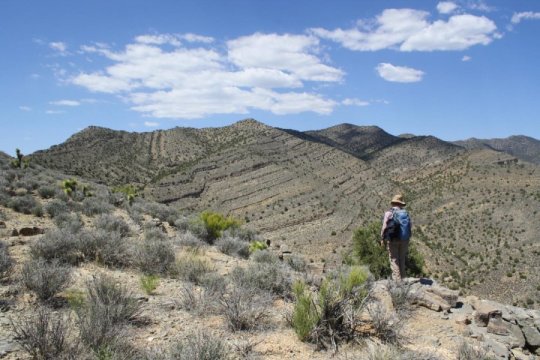[ad_1]
Scientists are peeking into ancient oceans to unravel the complexities of mass extinctions, past and future. A new examination of Earth’s largest extinction by scientists at the California Academy of Sciences and the University of Wisconsin-Milwaukee sheds light on how ecosystems are changed by such transformative events.
The study, published today in Biology Letters, suggests that the extinction survivors shared many of the same ecological roles as their predecessors, with one catch — there was a surge in the number of individuals with modern traits like greater mobility, higher metabolism, and more diverse feeding habits. These hardy stand-outs did a better job of driving recovery, making ecological interactions more intense in the process: fish were more agile, diverse predators and marine invertebrates like mussels became more defensive. Insights into this system and its occupants can help guide modern conservation in identifying Earth’s most resilient and best equipped species in the face of environmental stress.
“We’re interested in understanding why certain species and communities survived and recovered better than others,” says Dr. Ashley Dineen, a former Academy postdoctoral researcher and current Museum Scientist of Invertebrate Paleontology at the UC Museum of Paleontology at Berkeley. “For a long time biology has focused on the number of species that survive extinction events, but we need to also ask what those species did and how they reacted to stresses — these insights are important as we push our planet into an increasingly uncertain future.”
The massive extinction event, often referred to as the “Great Dying,” took place 252 million years ago and frequently serves as a proxy for the modern era. Similar to today, the climate regime was transitioning from a cooler period to a warmer period. This climatic fluctuation, driven by massive volcanic eruptions that spewed noxious gases, increased the temperature and acidity of the oceans, decreased oxygen concentrations, interrupted mighty ocean currents, and turned the ocean system on its head.
The researchers examined fossils of ocean-dwelling invertebrate creatures like clams, snails, corals, and sponges from Utah, Nevada, and Texas. This region once comprised the shallow outskirts of the ancient and vast Panthalassa Ocean. Using numerical methods, the team grouped marine survivor species into functional groups with similar traits, like mobile bottom-dwelling omnivores such as sea urchins, to better understand the ecological transformation in the wake of the Great Dying.
“We learned from our analysis that beyond documenting the number of species that arise during an ecological recovery, we need to know what they were actually doing — what scientists call their functional diversity,” says Dr. Peter Roopnarine, Academy Curator of Geology. “This helps us understand if the system has shifted toward favoring species with a variety of responses to stress.”
One surprising revelation: the study results showed significant ecological continuity among species — where species that were wiped out during the extinction event shared the same traits as those that originated in its aftermath. During recovery, however, there was a significant shift in numbers toward bigger and more active survivors that are strikingly similar to the inhabitants of our modern oceans. This shift in functional emphasis may be the the hallmark of an ecosystem set on the road to recovery.
“Our next step is to determine what kinds of species you want on the frontlines of recovery,” says Dineen. “For example, if you have a reef with twenty different species of corals but they all react the same to stressors, then they will all be similarly impacted when hit with a disturbance. But on a separate reef, if you have twenty coral species and each reacts differently to stress, the chance of losing the entire reef is lower. Having diverse coping mechanisms is critical for a future marked by increasing environmental stressors.”
The study team hopes their findings about species survivors will help scientists identify our modern — and urgently needed — conservation priorities.
“We’re often focused on estimating the number of species in an ecosystem, but we should also be learning about how — and how well — these species survive, and concentrate conservation efforts accordingly,” says Dineen. “When you consider the mass extinction we face today, it’s clear we have to take entire systems into account before it’s too late to correct course.”
[ad_2]















